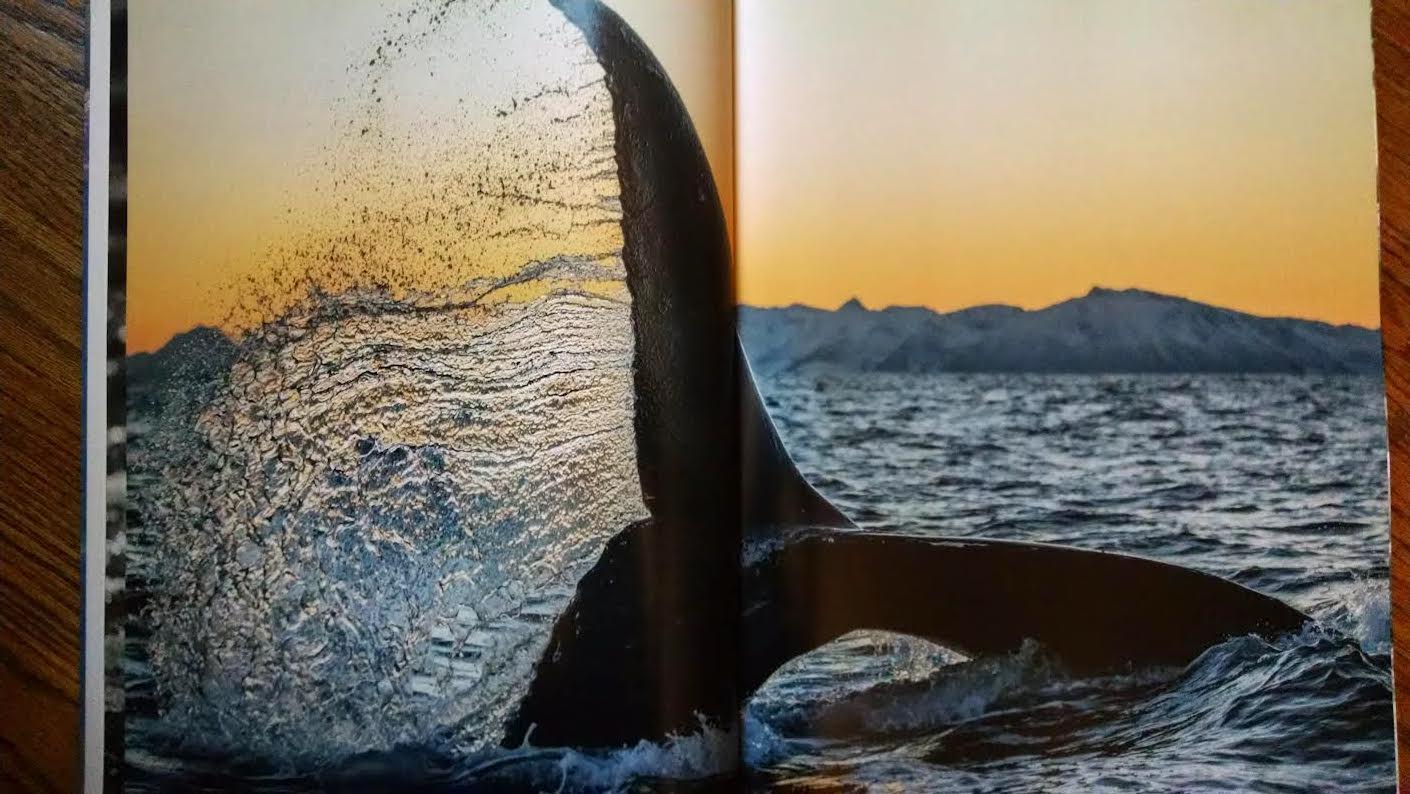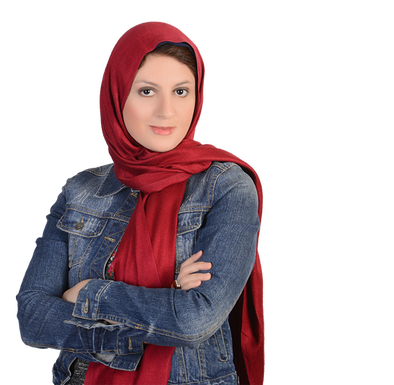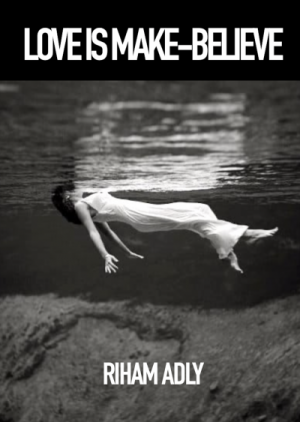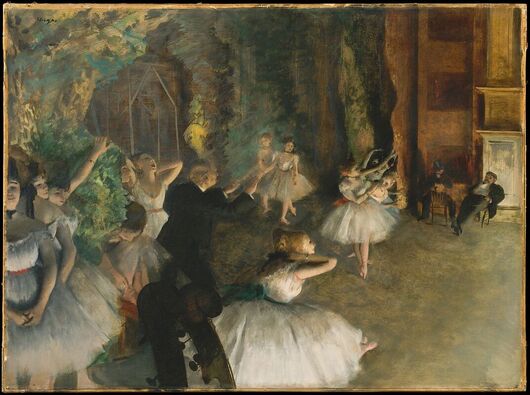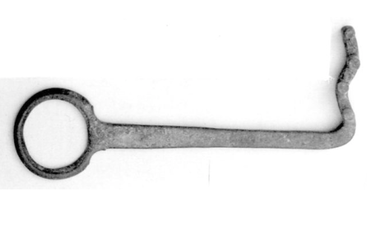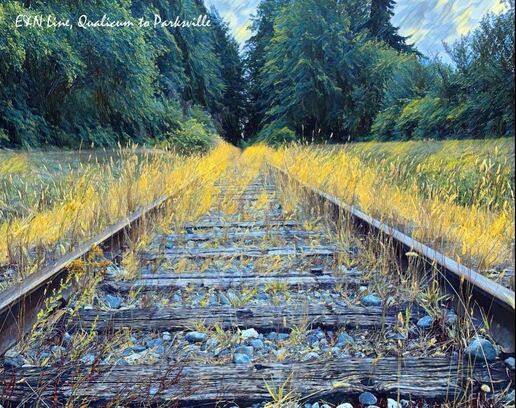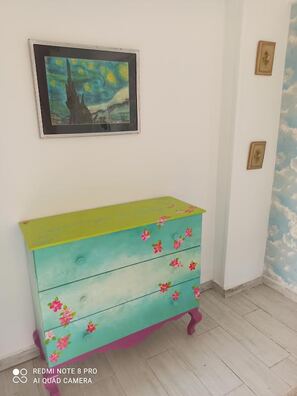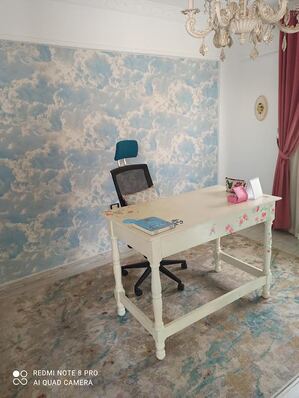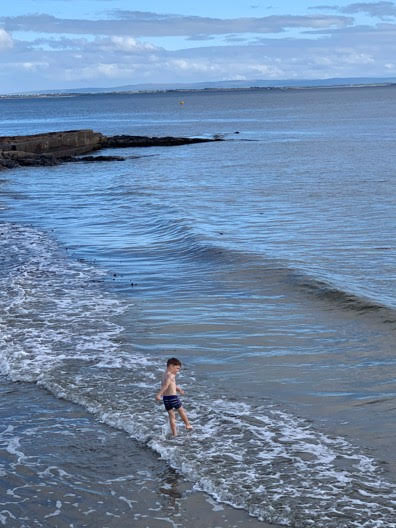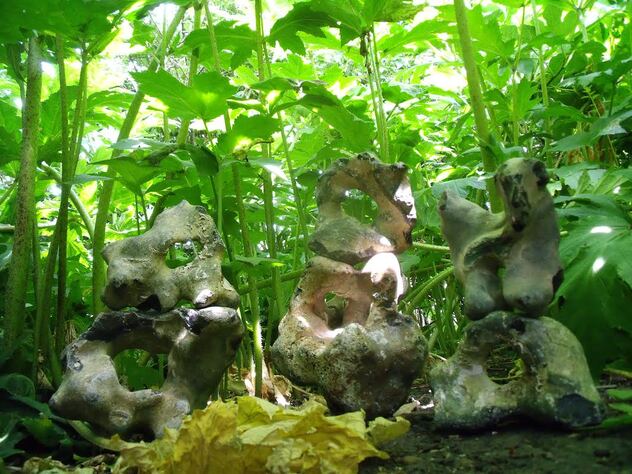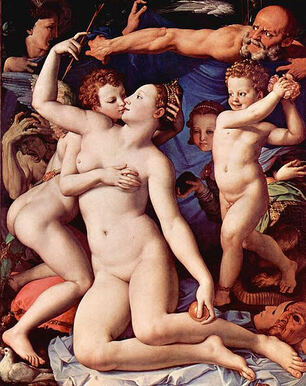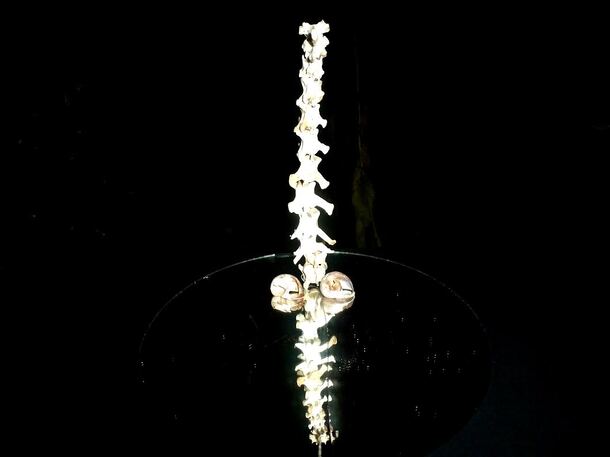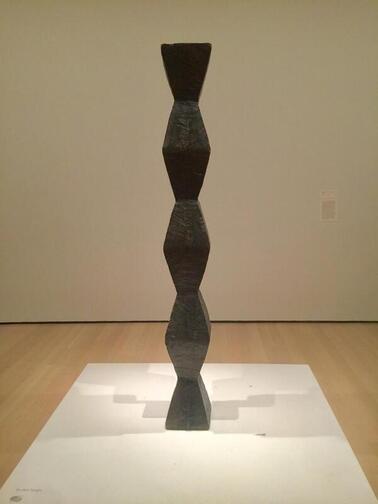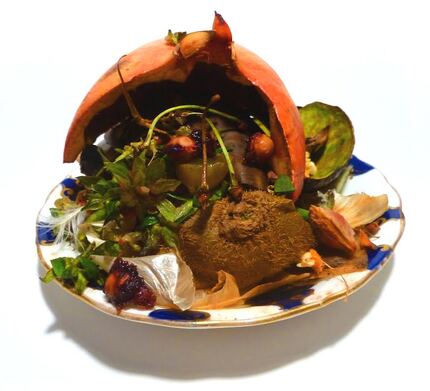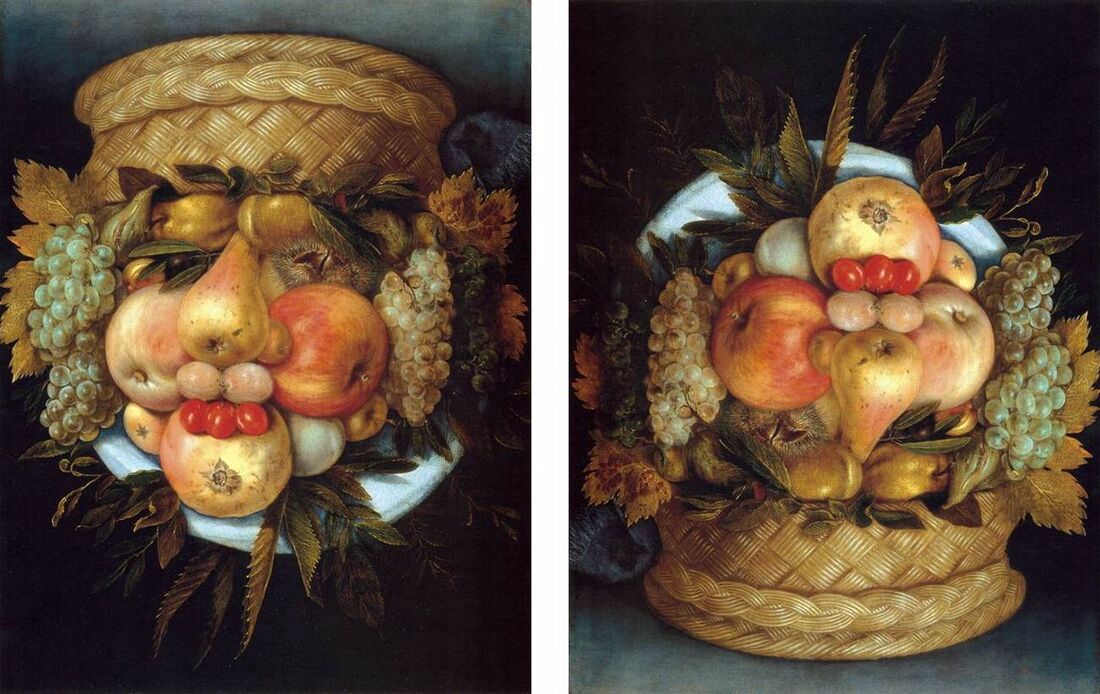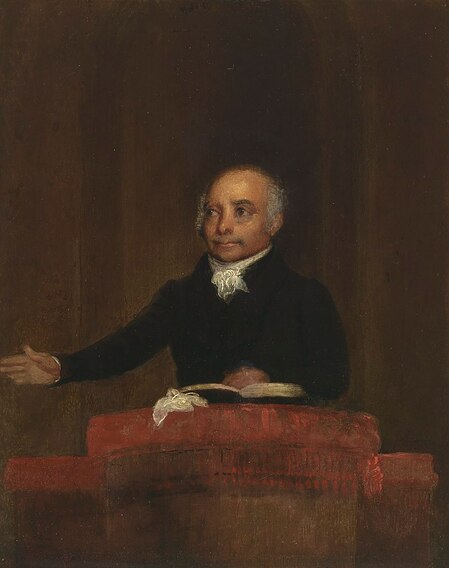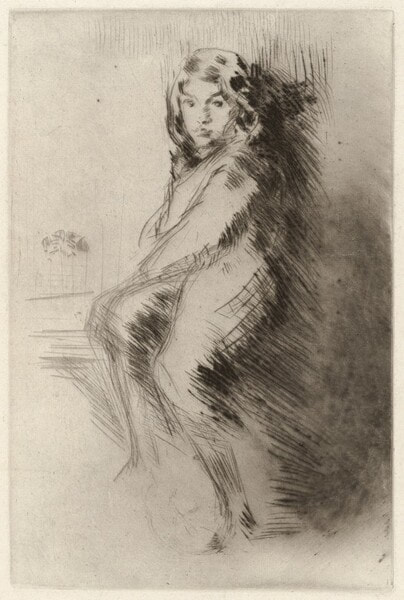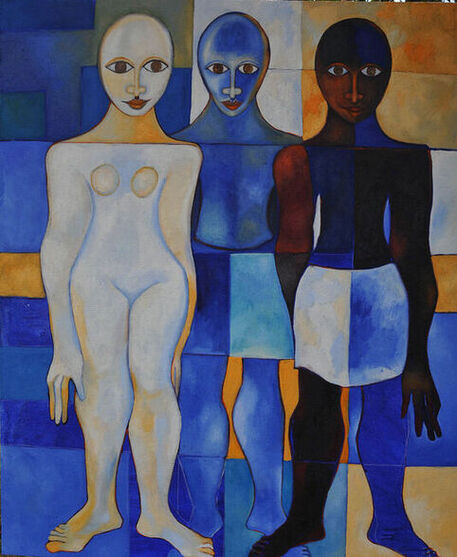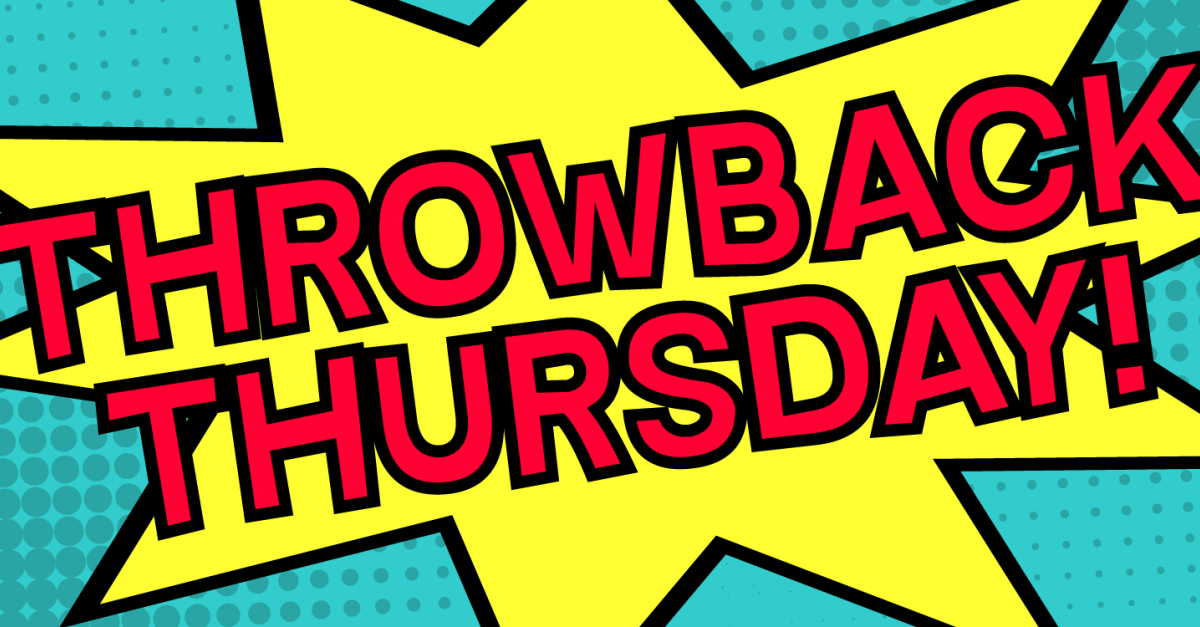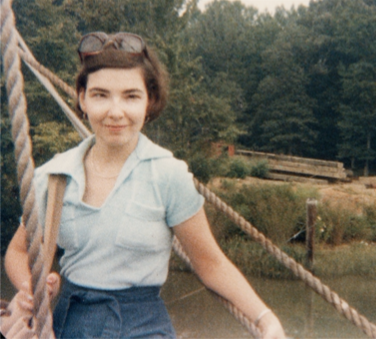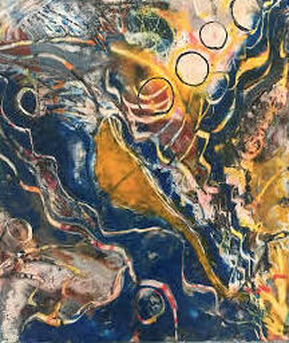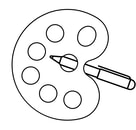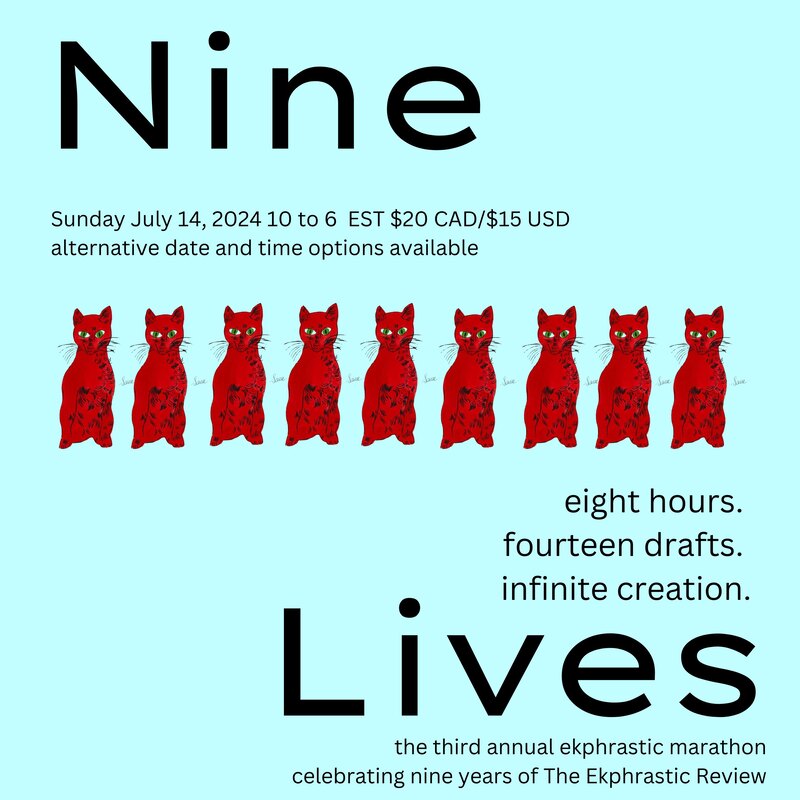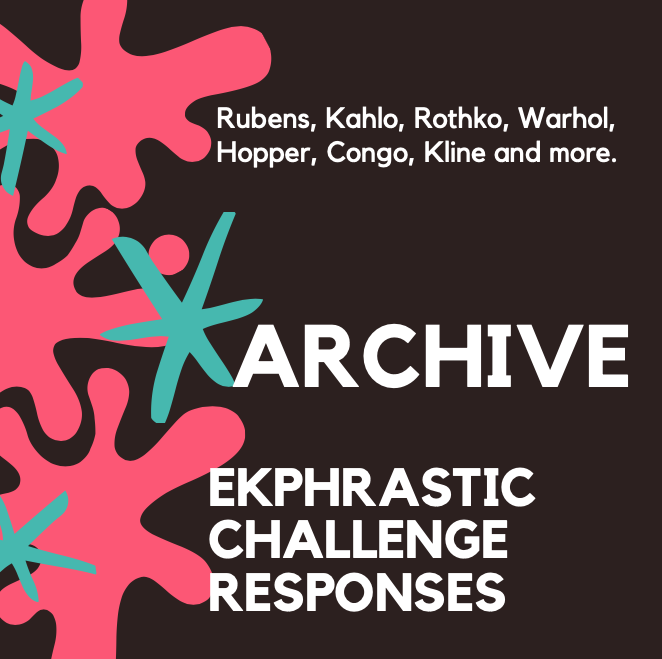|
Grand Bassam Saudade for the victims of the Grand Bassam terrorist attack & the people of Grand Bassam after Joana Choumali’s exhibit, Ça va aller, a series of iPhone photographs printed on cotton canvas, and hand-embroidered. this silence / is like a shroud I do not / know how to unstitch it / nor do I wish to it keeps / the unsayable intact / needled together // each word / pearls on my tongue like water over stone no one / can yank the skein / of sorrow from my mouth // how do I helm this ship home when the last hymn I hear is the sea’s metal slurry? // was the ocean / light or dark? did a bullet stray / between waves to unmake / another life? did the sun die / in the water / that day? // only memory has a voice which percolates through walls of brine & longing // what’s left / is the numb sky -- a stretch / of leaden sediment -- this beach still stained with waves unspooling into nothingness riddled with filaments of algae / like loose threads // all of night is grief’s province ever-generous, giving of itself endlessly, no peace, but an endless debris of memories night unsheathes my eyes monsters forth its orphan chant whets the edge between the living & the dead // I am tethered to this town that mends itself again & again with tendrils of seaweed & knotted rock this is my foothold though I scramble to stay afloat // that day still lives / in me, but I will let / the loom of colour / thread / through // the sun proceeds/ loosens itself from the ruins /swims toward the darkness the waves / over each unstitched loop like a mouth / widening into speech Cara Waterfall Ottawa-born and Costa Rica-based, Cara Waterfall’s poetry has been featured in Best Canadian Poetry, CV2, The Fiddlehead, SWWIM, The Night Heron Barks and more. She has won Room’s 2018 Short Forms contest, Room's 2020 Poetry Contest and PULPLit’s 2020 Editors’ Prize. In 2019, she was a finalist for Radar Poetry’s The Coniston Prize and shortlisted for the CBC Poetry Prize. Most recently, her manuscript was a finalist for the Animal Heart Press Poetry Chapbook contest. She has a diploma in Poetry & Lyric Discourse from The Writer’s Studio at SFU. www.carawaterfall.com
1 Comment
Whale Light The fluke is no fluke-- this happens all the time, these miracle windows we never look through except this once. Whale surfaced. Whale breathed. And now Whale returns to that other world, the long arc of sleek body ending with this-- not a tail but a window of water. Made by velocity and liquid pouring over skin, the trailing skim is stained glass without the stain, fragments of sky oranged by the gone sun-- it too having dove back down to that other world. The water window is not clear, has no mountains or waves on the other side-- it is just light with a frothy frame. Already the liquid glass is shattering back to sea. What do we see when we look through whale light? The world made bright by a creature who knows dark but that dark isn’t really all dark or the only-- there are other windows and other lights for all to see. Jim Minick Jim Minick is the author of five books, the most recent, Fire Is Your Water, a novel. The Blueberry Years, his memoir, won the Best Nonfiction Book of the Year from Southern Independent Booksellers Association. His honors include the Jean Ritchie Fellowship and the Fred Chappell Fellowship. His poem “I Dream a Bean” was picked by Claudia Emerson for permanent display at the Tysons Corner/Metrorail Station. His work has appeared in many publications including the New York Times, Poets & Writers, Tampa Review, Shenandoah, Orion, Oxford American, and The Sun. Love is Make-Believe Riham Adly Clarendon House, 2021 The Ekphrastic Review was pleased to connect with Riham Adly about her recent book, Love is Make Believe, a collection of flash fiction that includes a few ekphrastic stories. We will chat with her first about her work, and then you can read the stories below. The Ekphrastic Review: Is it correct to say that your flash fiction collection, Love is Make-Believe, is the first English flash book by an Egyptian woman? Riham Adly: Love is Make-Believe is the first flash fiction collection in English written by an Arab/ African (Egyptian)/ Middle-Eastern woman. Is flash fiction widespread in North Africa or the Middle East, in languages other than English? Is there a tradition of shorter story telling that resonates, or is the form quite rare? Flash fiction is an emerging art in the Middle-East. I first discovered it in 2018 by few Egyptian authors writing in Arabic. It's been an honour to have been asked to translate flash for the debut issue of Arab-Lit magazine. Tell us about your experience writing these stories. What was your process like? Where did you take inspiration from? In what ways did the creation of this collection transform you? Were there surprises along the way? I've always had the poet part of me more articulate than the short story writer part. When I discovered flash fiction I was able to utilize both aspects in my writing as flash itself is a mix between poetry and narrative writing. I started out writing stories without really thinking far ahead about a collection. Stories just came to me, some visited and were pleasant, some demanded to be written even when I didn't want to at times. I've always felt like a conduit vessel where ancestral voices and voices of the collective subconscious sought me out in particular. I would listen to voices urging me to tell a story, sometime stories too difficult to write, like stories about honour killings in "Why my Mother Loves the Color Black" or stories about female genital mutilation still carried in Africa in "The Brief Chronicled History of The Girl as told by the Realist but yet Optimistic African Fortuneteller" or stories about mental illness in "Josephine" or those about gender in "Mona Decides to Die but let's the Weather Decide" and so forth. By the time I'd written over 60 pieces of flash, I realized they all followed a theme and had come out as a collective voice in a single work and hence the collection. A couple of your flashes in Love is Make-Believe are inspired by art. How did this happen? Do you see yourself moving in an ekphrastic direction in the future? Yes, three of my stories are inspired by art. My first ever flash was " The Scream" inspired by Edvard Munch's The Scream and it first appeared in the The Ekphrastic Review. Art as in paintings is also another potent form of story-telling. Everytime I'd explore a painting or a work of art I feel the need to find out its story or message. I came across The Rehearsal of the Ballet, one Edgar Degas' ballerina paintings and somehow started seeing the words flow with movement in my head. My protagonist from "Prettier than a Ballerina" was then born. The same happened when I came across the work of a more contemporary artist , Nicolay Reznichenko with his painting of a women holding a key to operate a gentleman looking toy or puppet, from there I was inspired to write my own story "It's All About the Right Key." All three stories are about Egyptian women and their struggles with having their voices heard at all. I would love to produce more work inspired from art. I’m wondering about the tradition or contemporary practice of literature about art, in Egyptian culture. Does this have a long history or is it something that new? I believe it is relatively new. Tell us about some of your favourite artists. Whose work do you find inspiring to teach or write about? I find Van Gogh's work to be quite stimulating. I also appreciate the works of the likes of Renoir and Monet to an extent, but I am incredibly moved by Salvador Dali's surreal paintings. I've always wanted to create stories inspired from his art. On a more local front. Artist and caricaturist Mohamed Abla is one of my favourite Egyptian contemporary artists. What kind of barriers or challenges have you found both at home and in the world as an Egyptian Muslim woman writer? How important are any of these aspects of identity to your fiction? It is deeply ingrained in our culture that a woman is an inferior creature. Our voices, opinions, and presence, are constantly ridiculed and suppressed. We are expected to pleasantly and voluntarily succumb to what society deems appropriate. We are ridiculed when driving cars, when organizing marches or demonstrations, molested when taking on public transportation, judged and constantly criticized for what we wear and how we show up in the market and business world. Emerging women writers will always have to face such challenges when writing in their mother tongue. I've always found expressing in my mother tongue a scary affair for I'm always told to shut up. I decided to adopt the English language as my primary language of expression and creativity for when I speak it, I am safe, I am capable, I am creative and no one tries to shut me up. What’s next for Riham? Riham has been battling chronic illness and depression but one can only see the brightest of stars in the darkest of nights. After successfully launching my collection Love is Make-Believe I feel more empowered now to speak my truth and heal through writing. I'm working on a memoir centered around food-related trauma and also putting together my "Writing from the Subconscious" flash fiction workshop where I delve into the inner workings of the psyche, discovering what drives us and what limits us and what separates us from the Other. I explore concepts of polarity and the shadow, attachment patterns during childhood and their effect on our current relationships and also dip a little in dream symbology, all through the medium of flash fiction, crafting specific lessons and prompts that could help shape better characters, setting and metaphoric language. Visit Riham's website to learn more about her stories and work. www.rihamadly.com ** Click here to read Riham's story, "The Scream," published by The Ekphrastic Review in 2018. Prettier Than a Ballerina The thought—unlike some of my floating daymares—is calm, pleasurable and very much beguiling: A ballerina pirouettes and flips inside the light bulb, not without the flame-shaped halo hugging her. Rhododendrons— like the ones you used to get me— in the long-necked vase on the table stare back, disapproving. I know, I know. It’s probably my waning eyesight to blame and that really bright bulb, but really, it all depends on where I’m standing. This one here twirls her skirt in the light when I’m looking sideways. The view of the Nile from these windows is no longer spectacular. Twenty-seven floors below, I see masses in queues in front of the Faten Hamma Cinema. I see young couples feeding the river empty Pepsi cans and greasy Burger King wrapping paper. I see school kids in stripped green uniform mistaking the flowerbeds for trash bins. I see street hawkers calling out on top of their lungs in the siesta hour when there’s no one out there except for stray cats. I also see the note— it’s been with me the whole time you weren’t— all frayed and tattered from years of hiding in secret pockets stitched in dresses and bags and pillows and even hats. Its words— that read like something from one of those happily-ever-after movies we watched in our youth— slowly disappearing, one after another, running away. I want to run away too, but there’s also this girl. She looks a lot like Faten Hamma—-the actress the Cinema was named after. She looks familiar, like someone I must’ve known. I make a habit of watching her. One can’t be too trusting. I can’t ever tell the colour of her eyes, they’re like mirror I don’t want to look at. I’m being ridiculous again. Oh, no, no, no. That’s what she wants me to think. But, she indeed looks like a hamama (a dove). Remember when you used to call me “dove”? She comes in every week, walking around like she knows everything there is about anything, saying the note’s in my handwriting, that I made it all up. She argues and argues with me, like she has the right to. She makes me sick and because of it she brings in a doctor, a specialist, she says. “How long does she have left? Please tell me. ” Today those vague eyes of hers have a sad sparkle as she pleads with her doctor. They look like they’re coated with some sort of glaze. Tears? She looks…pathetic. Crossing Boundaries. Follow me. You’ll love it. The dying note had said. I know what they’re both up to. I’m leaving tonight, and nothing will stop me but first I have to go over the list of things I’m not leaving behind:
The following story was inspired by a painting by Nicolay Reznichenko . Click here to view it.
It’s Really All About the Right Key The congregation of metal clanked with her every move in an inconsolable jingle. Farrah got used to the sound of her burden as the keychain, toiling above the hill of her breasts, got heavier every day. Everything and everyone in Farrah’s life had a key. The key to her husband’s heart was his stomach. The key to his generosity was her obedience, the key to his pleasure was her vagina. Her kids had keys too: hugs, praise, and that firm voice of hers. Her parents, her friends, and even her employer had their own set of keys. One day while Farrah counted her keys, she realized, that one, very important key, went missing. Farrah looked for it everywhere, under her bed pillows, in the wardrobe closet, in the drawers of her desk. She even looked inside her fridge, in the kitchen cupboards and in the belly of her stove. Where could it have gone? Farah looked down at her left breast behind which her heart lay shielded in its ribcage, unreachable, indestructible. She remembered a time when her heart was a room without any trapdoors or contraptions--- a time when it could skip and sing before reaching the outskirts of childhood and growing into the curse of womanhood. She tried to quiet and shush her heart, but it pushed and punched its every beat a cry, a plea. There was only was place left where she dared not look. The chest of drawers high up in the storage room where her most painful memories sat, neatly folded and pushed away. My key, her heart demanded, find my key. When she reached the top shelf she found her book of secrets, and inside the book she found a map. The map led to a cottage nestled in the depth of pocketed time. She walked the length of her shadows, traversing the recollection river. Aubergine- hued Lily thickets lining the path with their black devil’s tongue stood like infantrymen ready to shoot. When she last saw them a lifetime ago they had had soft petals of white and pink. Her skin pricked and she felt a fever burn inside when she stood in front of the unlocked gate. Inside the cottage she glimpsed the keeper of her heart’s key. Not much had changed except for the silver that adorned his beard. His eyes still held the saddest shade of purple. Time lay curled in his lap like a cat. She watched the man that was not her husband cradle his pain and play with his own key chain. Grief spilled in torrents when their eyes met. “Did you come back for me?” The keeper asked, “I still have your key.” She remembered their deep passion, how he filled the dead space of loneliness in her heart, how he watered the dead flowers once blooming with her youth. She remembered the hushed calls, the secret letters, and the cloying sweetness of roses. “Adultress,” they had called her. “A sinner.” She remembered the whiplashes, the cries, the pointing fingers, the accusing eyes, and the weeping of her children pulled from her grasp. If only their love hadn’t been a sin. She held the keeper’s eyes and let him see all she could not speak. “I’ll sit here and wait then, till you’re free,” her keeper said. “You still have my keys. You will always have my keys.” So she left the cottage and abandoned her key, letting her heart sit in its prison, but was her heart really imprisoned? Did it need a key? The inconsolable jingle of her chain guided her back to the sound of her children playing hide and seek. Time with its lancinating edges walked her back to the high shelf in the storage room. “Hi Honey.” Her husband chimed, his fingers wrapping her waist in a tight grip. She stood taller, her head held high. He must be proud, she thought. For people bless him even when he’s hit her/ cursed her/ belittled her, even when has sinned. She smiled at him, letting him hear the metallic tinkle of her key chain. His grip of steel tightened. “Darling, what would you like to have for lunch today? Would you like the lamb and lentil soup with rice pilaf and some Tztziki?” She reached out and kissed him full on the mouth, “Try to come home early today, I’ll be wearing your favourite dress.” His grip relaxed. She smiled again. She smiled more and more every day, enjoying the sound of her keys’ clanking jingle. Riham Adly Epistemology of a Photograph A small boy sprints into foam on Galway Bay. A splash leaps from his planted foot; his heel settles toward Earth’s mantle; wet sand worms upward through his toes. His leading leg is stilled above a swell, toes curled and poised, shortly to try the easy surf in a paroxysm of play. His reflection stains the thin retreating sea. His arms remain straight and stiff, and his hands tightly fisted as if to hold for now anyway the water-addled kid-joy of running. One arm points back toward boulders, taupe sand, maybe sisters, I cannot say. His eyes are down, but something is beyond. I think he slips an outward look, glimpses Granny. Next, swells approach a shore not seen. Spray, a still pool, withdrawing froth. A jetty tapers and holds these well enunciated waves away from foreshortened waters, distant houses, clouds riding hills as grey and blue as the bay. Outside the frame Granny watches, smiles praise, surely thinking of how he is right now. The sea laps at her knees and, leaning toward the boy, her eyes may let memory float to when she too leapt into waters too wide for imagination or when his father frolicked within her ken in frigid waves, happy and safe. Even farther out, almost where the sea is wild and near to buoys that mark…something three old men swim across the bay, two miles of reach and pull, challenge and conquest, from promontory to promontory. Their white heads switch and bob, profiled against the sky. Like Granny they must be barrel-bellied. Unlike Granny they’re implicated by the freely playing child not at all. H. G. Rogers This poem was presented and read in 2020 at the Poetry Circle of the Yeats Center in Sligo, Ireland. H. G. Rogers earned a Ph.D. in English literature from the University of Texas–Austin and, as to be expected, served a full military career. He later became a corporate trainer, a leadership consultant, and a financial advisor. He is currently seeking representation for a literary novel. He lives in Northwest Arkansas. Dr. Gottfried M. Heuer, Jungian Training–psychoanalyst and –supervisor; Neo-Reichian body-psychotherapist: over 40 years of clinical practice in West-London; independent scholar with more than 70 published papers, translated into more than half a dozen languages. He recently initiated the International Association for Otto Gross Studies, https://ottogross.org). His books include 10 congress–proceedings for the International Otto Gross Society (which he co-founded. Sacral Revolutions (Routledge, 2010), Sexual Revolutions (Routledge, 2011, Russian edition 2017), and Freud's 'Outstanding' Colleague/Jung's 'Twin Brother': Otto Gross (Routledge, 2016; he discusses this boo on https://vimeo.com/196609212 and on https://youtu.be/zxEkj9SsAKw ). He is also a published graphic artist, photographer, sculptor and poet.
Letter to Reverend Thomas Paul 1773-1831 Born Exeter, NH. Portrait 1825 National Gallery, Smithsonian Institute When you became a minister, did they still call you boy as they did your father, standing alongside his owner Gilman, taking risks as he did as a slave fighting in battle? As the son of a slave, did you share his anger and memories or did the bible and preaching cleanse or free you from the scrutiny of others, in Boston, in New Hampshire? You were a preacher, a Prince Hall Black Mason ordained a Baptist, praying for the souls of your ancestors, a better life than those who walked before you in chains. Were you respected, revered by your white brethren? The portrait of you hangs in a national gallery, yet in New Hampshire you are unrecognized in their history. Julie A. Dickson Julie A. Dickson writes when the muses of water, Autumn, nature and animals rouse a sleeping pen to her hand. She especially is drawn to visual prompts. Her poems appear in Open Word, Misfit, Sledgehammer, and The Ekphrastic Review, among others. She advocates for captive circus and zoo elephants, feral cats and shares her home with two rescued feral cats, Cam and Claire. Her full length works are available on Amazon. Dickson is active in the New Hampshire poetry community and works with seniors in their home settings. Everyone Says The Parents Did Their Best they try everything enroll him in classes that teach how to strut like a man hire a voice coach to kill the soprano squeak sign him up for little league karate ice hockey buy him a cowboy hat and boots with spurs but no toy gun they don’t believe in guns they take away the doll the tutu the sparkly silver wand and throw them on the bonfire while his sea green eyes grow wide and he never cries and neither do they not even when the police bang on their door and tell them it wasn’t their fault and after that Roberta Beary Roberta Beary has work in The New York Times, Atticus Review, Litro, New Flash Fiction Review, and the Best Small Fictions 2020, and Best Microfiction 2019/2021 anthologies. The longtime haibun editor at Modern Haiku, she recently collaborated on One Breath: The Reluctant Engagement Project, which pairs her writing with artwork by families of people with disabilities. Carousel, her most recent poetry collection, won the Snapshot Press UK book award contest. She lives in the west of Ireland. Click on the painting to view the selected responses for this ekphrastic writing challenge. If you are new to this Review, we have bimonthly ekphrastic prompts. You can click on "Ekphrastic Writing Challenges" on the menu up top to find prompts, responses, and our challenge archives. It's great fun writing with others from around the world, and just as much fun to read the variety of inspirations from a single artwork. Our current prompt is Starry Night by Van Gogh. Click here for details. Deadline is one week today! THROWBACK THURSDAYS: Selections by Alarie Tennille I chose to revisit past Februarys for inspiration. This shortest of months can seem like the longest, but we can have spring, summer, or the tropics anytime in the ekphrastic world, so I decided to look at what inspired other writers in gray winter. My Life with Matisse, by Sheila Wellehan https://www.ekphrastic.net/ekphrastic-journal/my-life-with-matisse-by-sheila-wellehan I love the frolicking, galloping pace of this poem and how Wellehan makes readers think of her as the woman in the portrait. She uses one poem to celebrate Matisse and all of his work, from his complete palette of colour to how he brightens her life. Chagall’s Poet with the Birds, by dl Mattilla https://www.ekphrastic.net/ekphrastic-journal/chagalls-poet-with-the-birds-by-dl-mattila Here’s another selection that celebrates shimmering colours and dancing rhythm. It makes us crave spring and summer. I suspect Matilla sees herself as the poet on the canvas just as Wellehan moved in with Matisse. Both these poems appeared six years ago, but haven’t lose their power to lift my mood. Lascaux II, by Neil Creighton https://www.ekphrastic.net/ekphrastic-journal/lascaux-ll-by-neil-creighton From poems about bright colours and flowers, we slip into the dark caves of Lascaux. Isn’t it inspiring to see how our earliest ancestors felt and respected the mysterious power of art? Whenever you need a day brightener, art, poetry, music, or a good book can give you a break from your worry du jour. At the Guggenheim, or Working-Class Girl Meets Rothko, by Nancy Hewitt https://www.ekphrastic.net/ekphrastic-journal/at-the-guggenheim-or-working-class-girl-meets-rothko-by-nancy-hewitt Talk about being lifted from winter blahs, this Rothko canvas could easily take the place of an S.A.D. light. I love how Hewitt takes us with her to meet the painting at the Guggenheim and then builds on our intimacy when the narrator invites us into her life. Since the author is a psychotherapist, she knew she was giving us insights we could use. Liminality, by Janina Aza Karpinska https://www.ekphrastic.net/ekphrastic-journal/liminality-by-janina-aza-karpinska Hopper’s paintings often have a stark, lonely, wintry quality to them, but Karpinska sees this work differently. She sees a young woman in a noisy train station finding her own respite where the clamor “doesn’t touch her.” And we sit soundlessly watching her, letting the racket in our heads quiet down, too. Alarie Tennille is a longtime contributor to The Ekphrastic Review, a guest judge and guest editor, and a prize nomination consultant. Her ekphrastic book, Three A.M. at the Museum, was recently named Director’s Pick at the Nelson-Atkins Museum of Art in Kansas City. Call for Throwback Thursday selections!
Be a guest editor for a Throwback Thursday! We occasionally post this feature on Thursdays and would love to do so more often. Pick around 10 favourite or random posts from the archives of The Ekphrastic Review. Use the format you see above: title, name of author, a sentence or two about your choice, or a pulled line from the work, and the link. Include a bio and if you wish, a note to readers about the Review, your relationship to the journal, ekphrastic writing in general, or any other relevant subject. Put THROWBACK THURSDAYS in the subject line and send to theekphrasticreview@gmail.com. You sharing your favourites or making a random selection for discovery helps writers get readers. We have over 5000 pieces of ekphrastic literature on this site and at least 1000 different writers. Show us the ones that moved you over the years. Along with your picks, send a vintage photo of yourself, too! Let's have fun with this! Claire’s Cosmography The pale blue ribbon creates the figure, pulls her out, a night-sky-blue silhouette against night-sky blue ground: a forehead and two outcurves, cheek, nose, then a chin-angle. She bears a cloud or nebula where the cheekbone might lift a wing. Another streamer parallels her, red-striped, wavy, a sugar-cane snake that makes another woman, ultramarine too. The maybe hair of first woman flies behind both, yellow orange gold. Does the encaustic technique’s heat evoke fire-hair, unburnt, behind the blue forewoman? But there is no jury, no common law. Four yellow bubbles or worlds rise through her, and more squiggles in red and gold like vertical handwriting––maybe the lore this painting imagines, women made of women made of night sky, a cosmology which doesn’t care to make common sense. Perhaps the origin fires blew them, arcs, streamers, snakes for company. The idea of order here? Confetti’s spray and fall, unruly colours like the legend of women’s unreason, or this discipline that may look like none. Mary B. Moore Mary B. Moore’s poetry books include Dear If, (forthcoming, Orison Books); Flicker (Dogfish Head Prize, 2016); The Book Of Snow (Cleveland State UP, 1997). Chapbooks, both prize winners, are Amanda and the Man Soul (Emrys 2017) and Eating the Light (Sable Books 2016). Recent poems also appear in Poetry, Prairie Schooner, Birmingham Poetry Review, Gettysburg Review, ekphrastic.net, Nelle, Terrain, Georgia Review, 32 Poems, The Nasty Woman Poet anthology, and more. A retired professor, she lives in Huntington WV. |
The Ekphrastic Review
COOKIES/PRIVACY
This site uses cookies to deliver your best navigation experience this time and next. Continuing here means you consent to cookies. Thank you. Join us on Facebook:
Tickled Pink Contest
April 2024
|
